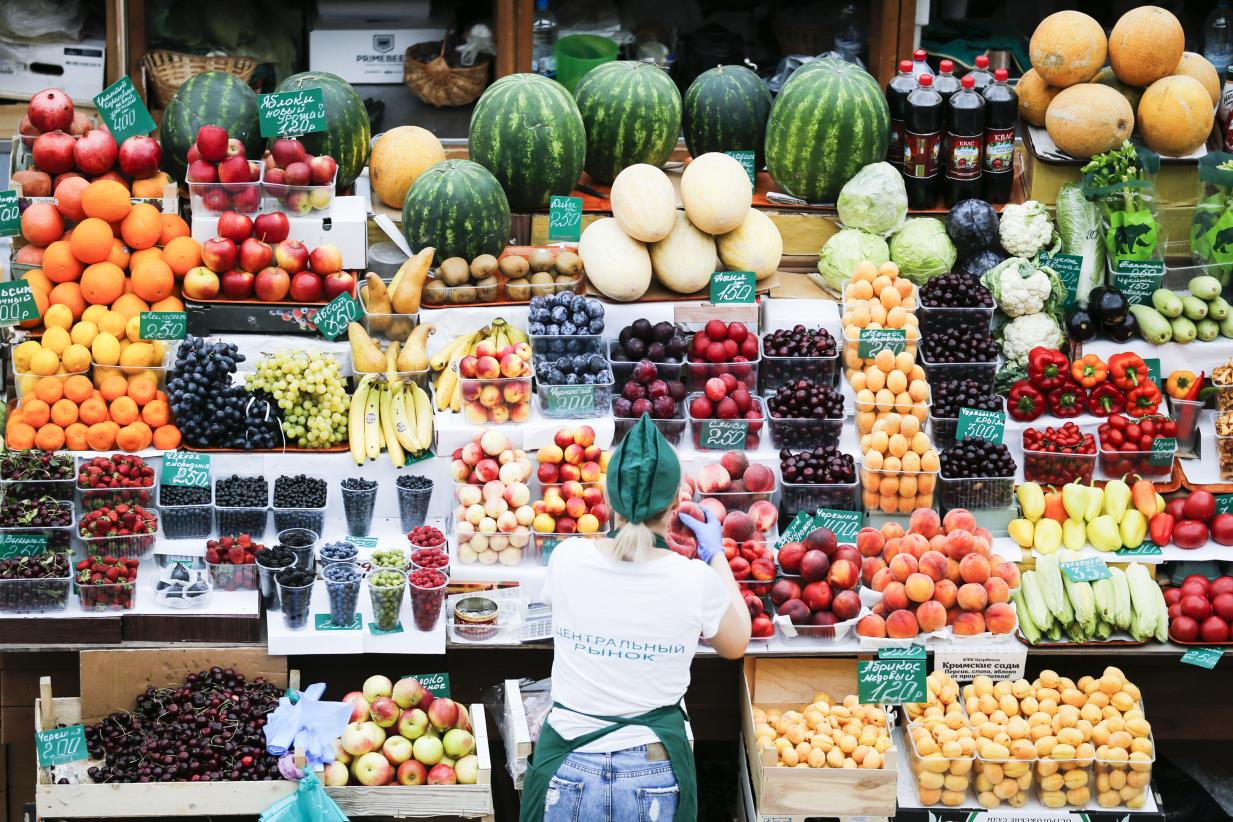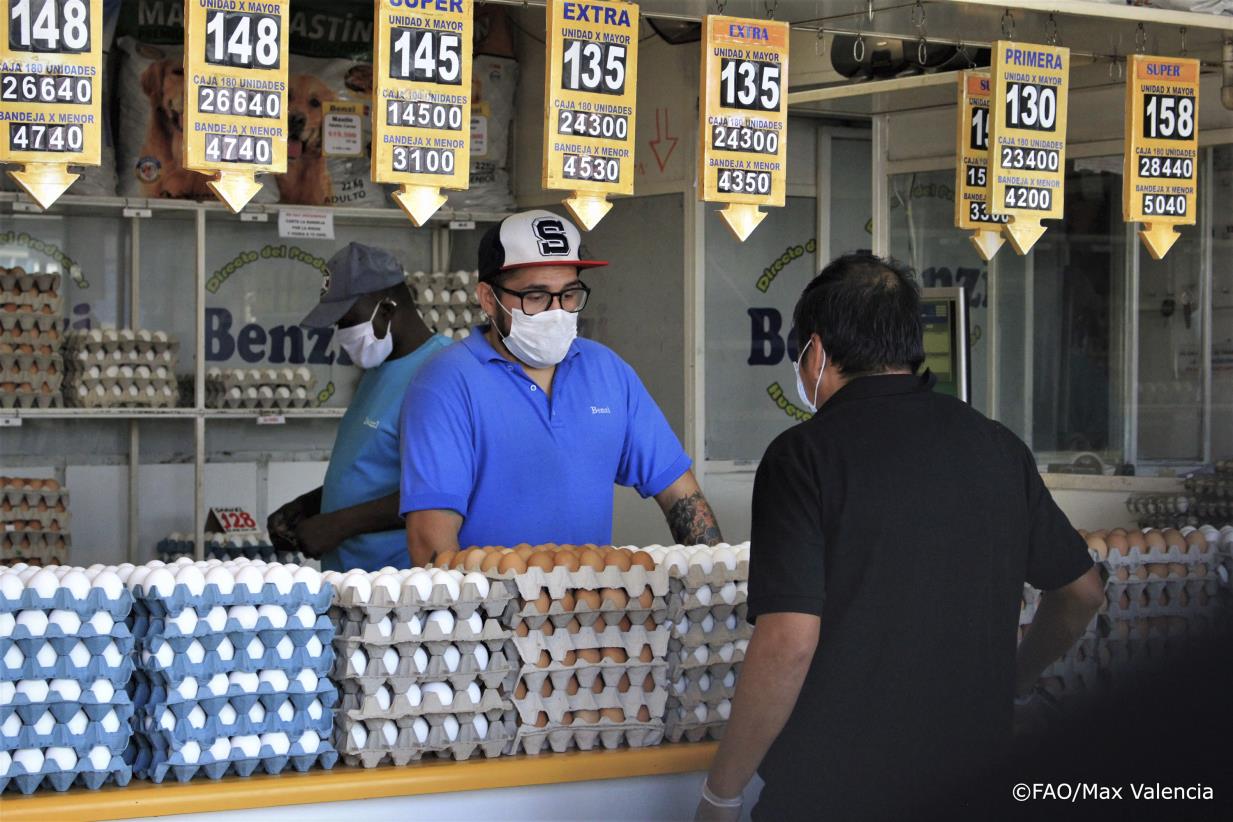
One giant leap for food safety
From space travel to COVID-19, the food hygiene code has stood the test of time
Back in the 1960s, space travel brought to light the critical importance of food safety. The preventative approach developed for testing the food of the astronauts has since been put into a “food code”, developed jointly by FAO and WHO, that protects us all to this day. ©FAO/Maxim Zmeyey
07/06/2023
The year was 1969. Final plans for travel to the moon were being fine-tuned. On the checklist had been how to keep food safe for the astronauts during a spaceflight. Foodborne illnesses in the United States, and indeed worldwide, in the 1960s were not a rarity.
So in the years leading up to lift-off, NASA worked with the Pillsbury Company and the United States Army Laboratories to ensure that the astronauts, orbiting in space, would not get sick from the food prepared for the flight, a situation that could be detrimental to the mission and safety of the spacemen. The team approached food safety the way it tested engineering reliability: by checking the weak points in the system.
Food can become unsafe through a variety of “hazards” that can be biological, chemical or physical but ultimately make the food unsafe for human consumption. By assessing the hazards and knowing where the critical control points, i.e. the potential weak spots, are, problems can be prevented. Prior to this approach, issues were identified solely in the end product, sometimes only once it reached the customer with often dire consequences.
This change in approach, focusing on prevention, marked a major shift in thinking and in the industry, a shift that, like space travel, has stood the test of time.
During this period, another body was focused more on earthlings and making these standards international for the sake of everyone on the planet, not just in space. Gathering in Geneva, Switzerland, the Joint FAO/WHO Codex Alimentarius Commission endorsed a “food code” that would serve as the backbone for all hygiene-related food standards for the next 50 plus years.
This body aimed to have every food business operator, whether a colossal, industrial processing facility or a vendor with a cart, implement a systemic way of preventing, controlling or removing contamination from food so that it would not make people sick. The gathering led to the creation of the General Principles of Food Hygiene, a document thatset out to accomplish just that.


In its latest gathering, the Codex Alimentarius Commission has further promoted the HACCP-approach, a process to assess hazards and establish control systems that focus on prevention rather than on end-product testing. Left/Top: ©FAO/Maxim Zmeyey Right/Bo
This code follows the food chain from production to consumer, setting out the necessary hygiene conditions or good hygiene practices (GHPs) for producing food which is safe and suitable for consumption. It recommends the Hazard Analysis and Critical Control Point (HACCP) approach when GHPs may not be sufficient to ensure food safety due to the complexity of the food operation or specific hazards associated with the product or process. This science-based, preventative system identifies and evaluates hazards which are significant for food safety and implements measures for their control. HACCP is in use around the world today and this month has gained importance and prominence in the code.
Food business operators need to know and understand the hazards associated with the food they produce, transport, store and sell so they can take measures to control them and be sure that their products are safe and suitable for consumers.
The Codex Alimentarius Commission also provides a large reservoir of commodity standards on everything from canned fruit cocktail to mango chutney. Each commodity has a set of standards that it should live up to, but all of them refer back to the General Principles of Food Hygiene when it comes to ensuring their safety for consumers.

A good food safety culture means that viruses, microbes or other harmful matters for humans will not be spread at any point in the food value chain, from processing to delivery. ©FAO/Max Valencia
Good personal hygiene practices in the manufacturing of food have been at the foundation of this work since the ‘60s. When hygienic standards are followed correctly, viruses or microbes harmful to humans should not be spread through food manufacturing practices. For example, when the COVID-19 pandemic began, food business operators following the general principles of food hygiene and implementing good manufacturing practices already had the kind of food safety culture required to prevent the spread of the virus in their facilities or on their premises.
In 2020, the Codex Alimentarius Commission updated the food code with more in-depth guidance on the management of allergens. With allergies a growing area of concern in the world, Codex is continuing its work in this area and is in the process of strengthening its related food labelling requirements.
Another important update, one that can even help address issues of water scarcity, is that the code now differentiates between acceptable water quality levels based on its intended use. Not all water usage, such as watering crops for example, requires potable water. The focus is rather on ensuring that water is fit for its intended purpose. This distinction can reduce the stress on drinking water and have wide-reaching benefits for saving this increasingly scarce natural resource.
Thanks to the visionary approach of Codex in those early years, scientific knowledge about how to safely prepare and handle food was turned into standards that regulatory authorities and the food industry are still using today to monitor and continually improve food hygiene.
There is one basic principle: if it is not safe, it is not food. Next time you go into your local café or restaurant, or even buy food from the grocery store, remember that these food standards are in place to keep you from getting sick. That is what Codex aims for: to ensure safe food for all people around the world, or those orbiting it too.
*This story is an update of one first published on 08/10/2020
Related links
Learn More
- Website: Codex Alimentarius International Food Standards
- Website: Food Safety and Quality
- Publication: Food Hygiene at 50 (Available in English, French and Spanish)
- Website: FAO GHP and HACCP Toolbox for Food

